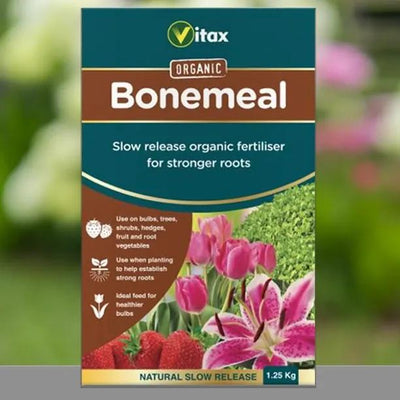Red Falstaff Apple Trees
'Red Falstaff' is a sport of the famous Falstaff that has become more popular than its parent, thanks to its rich colour. The deeper red colour is the only real difference; otherwise, they have the same scrunchy bite, tartly sweet flavour and high juice content that is great for use as a sharp element in a cider blend.
In a sunny year, fruit from the South will take on a shiny, cricket ball red colour but a slightly streaky, paler colour is more common after most British summers.
Get picking in the first week of October; they store until the end of December, so we suggest that you juice and then freeze extra fruit if you have too much.
Highly recommended for the drier Eastern side of the UK. Compact tree with slight weeping habit.
Browse our range of apple trees, or all our fruit trees.
Read our guide to buying apples.
Delivery season: Bareroot plants are delivered in late Autumn to Spring, about November-March inclusive. Pot grown plants, year round.
Features
- Eating & juicer: Medium sharp and fruity
- Useful for blended ciders
- Partial tip bearer
- Weeping habit
- Self fertile.
- Pollinator
- Pollination Group C.
- Harvesting: October/November
- Stores 1 - 2 months.
- Recommended for the East side of UK
- Also good for the North
- RHS Award of Garden Merit
Growing Red Falstaff Apples
Apples like rich, well drained soil, and will thrive on clay in locations that do not get waterlogged in winter.
A full day of sun and shelter from the wind is ideal.
Your trees have a bit of a weeping habit, and frost resistant flowers.
Disease notes:
Susceptible to scab, not recommended for humid areas
Rootstocks:
We use MM106 for Red Falstaff, the UK standard for medium-sized trees, ideal for gardeners. It gives a half-standard about 4m tall, and a bush about 3m.
MM106 maidens are suitable for cordons and espaliers.
Pollination Partners for Red Falstaff
Your trees are self fertile, making decent crops without a pollination partner, but still perform best with one.
Red Falstaff is in Pollination Group C, which cross-pollinates with other apple trees in Groups B, C and D.
Use our Fruit Pollination Checker to quickly find pollination partners, or Apple Pollination Guide to learn more.

 Secure, One-Tap Checkout
Secure, One-Tap Checkout
 Hand Picked, Delivered to Your Door!
Hand Picked, Delivered to Your Door! 1 Year Bareroot Guarantee
1 Year Bareroot Guarantee













